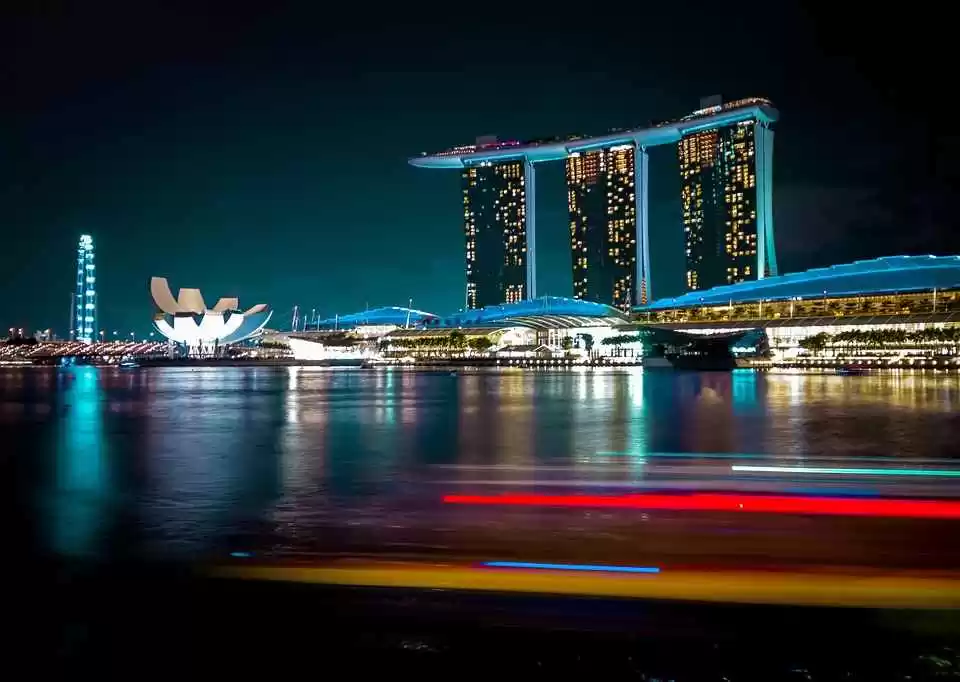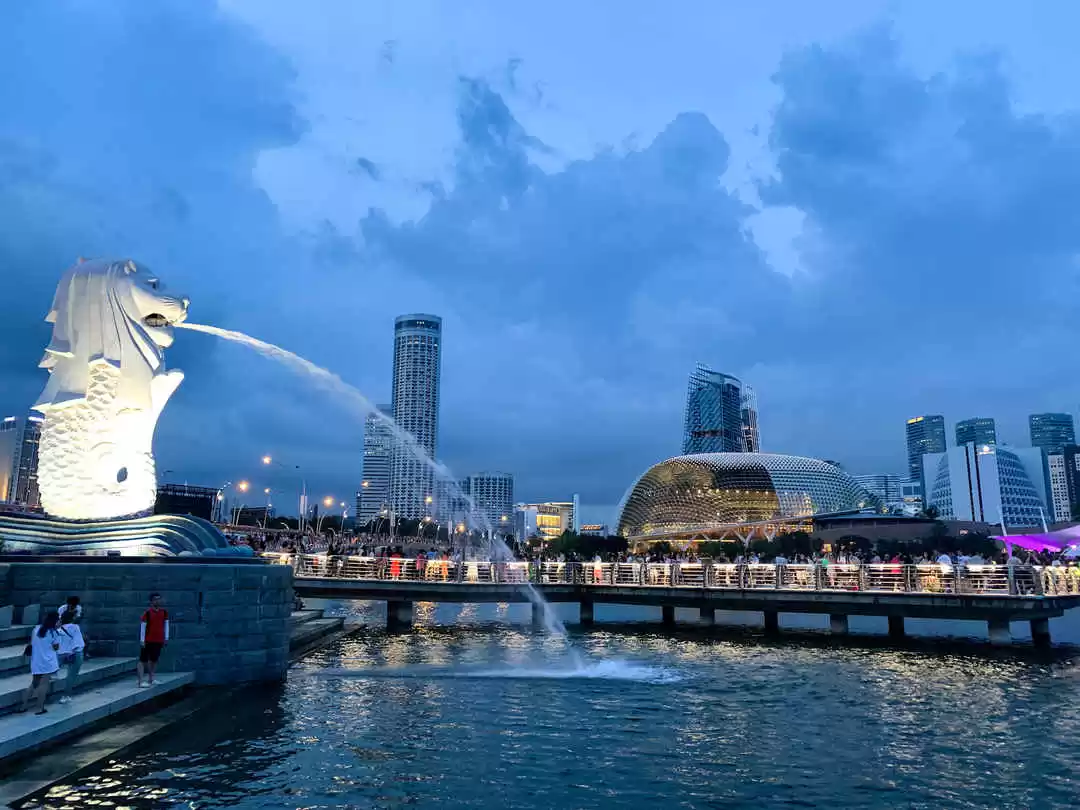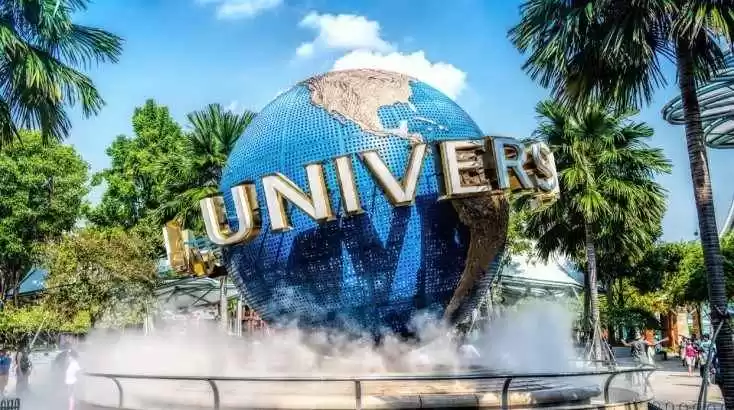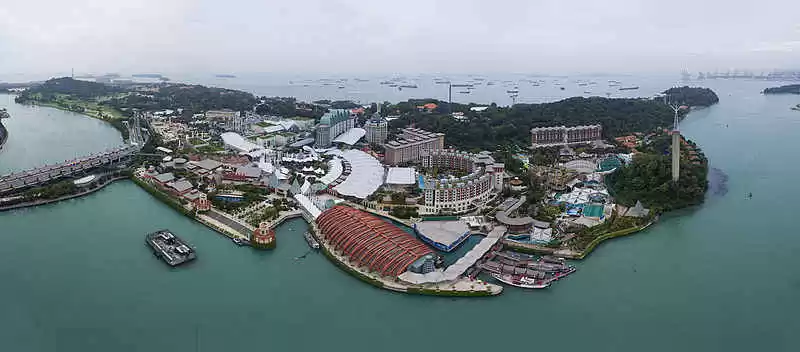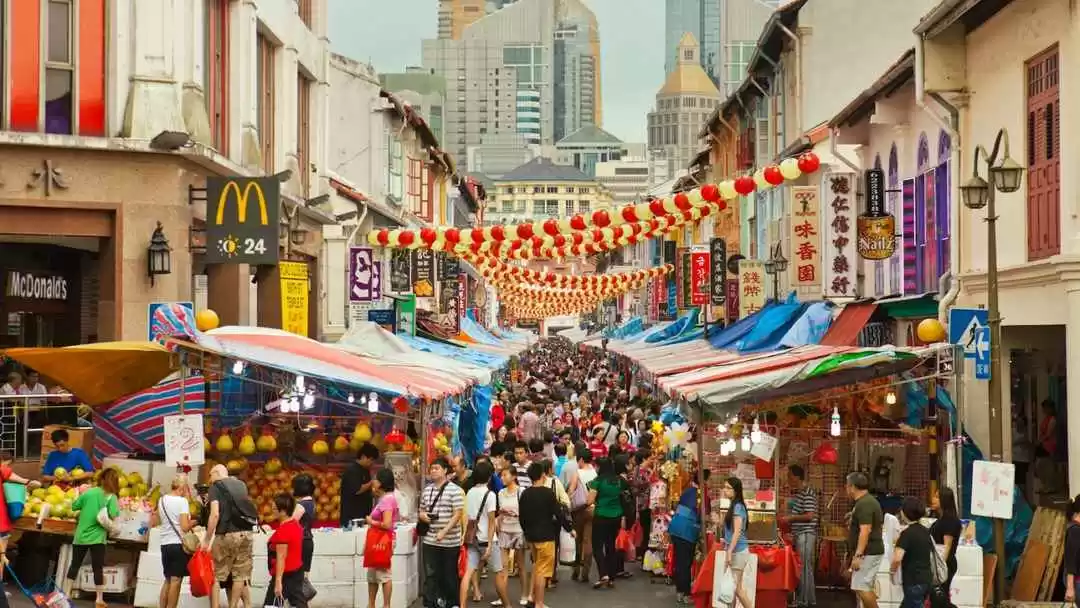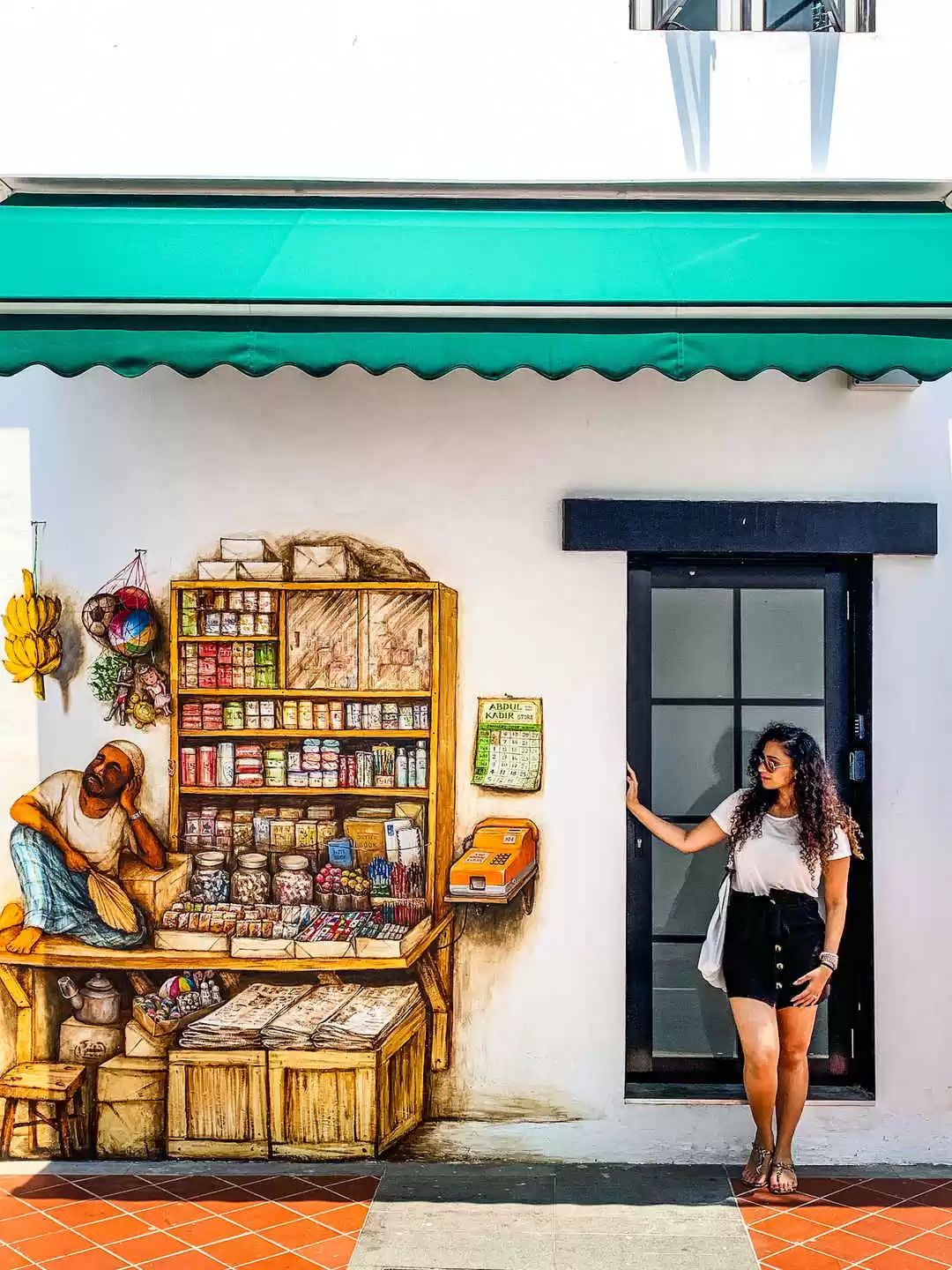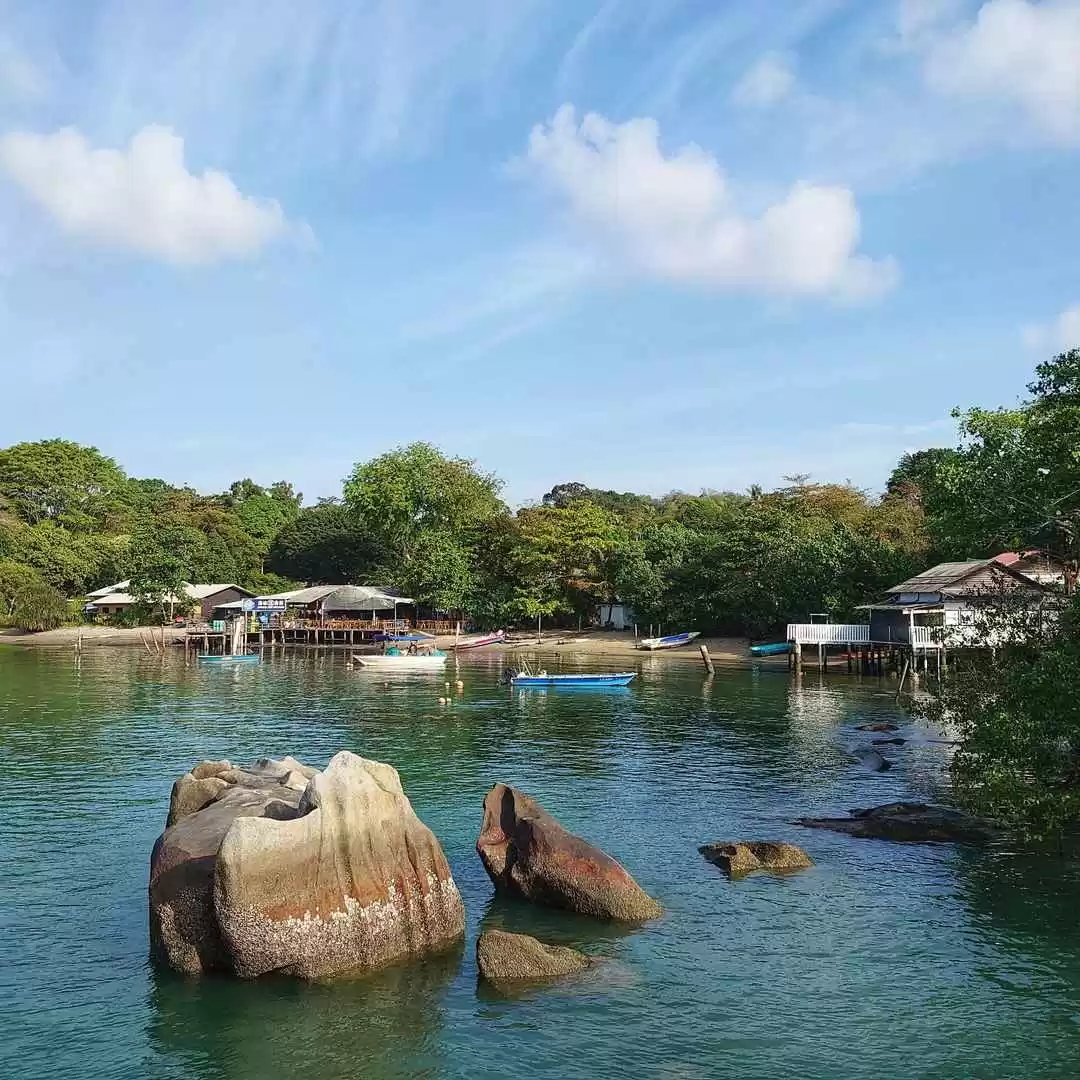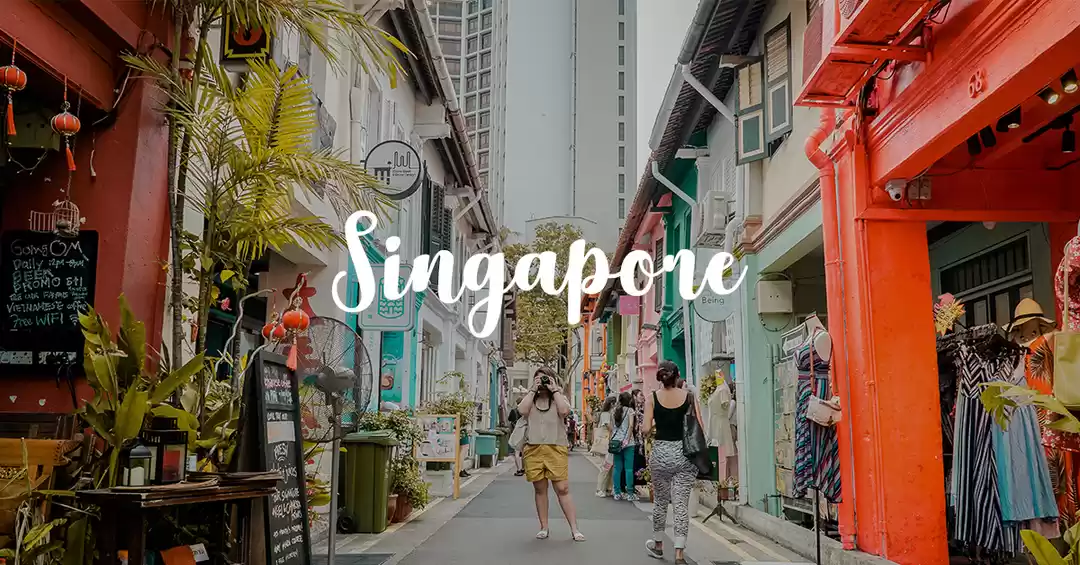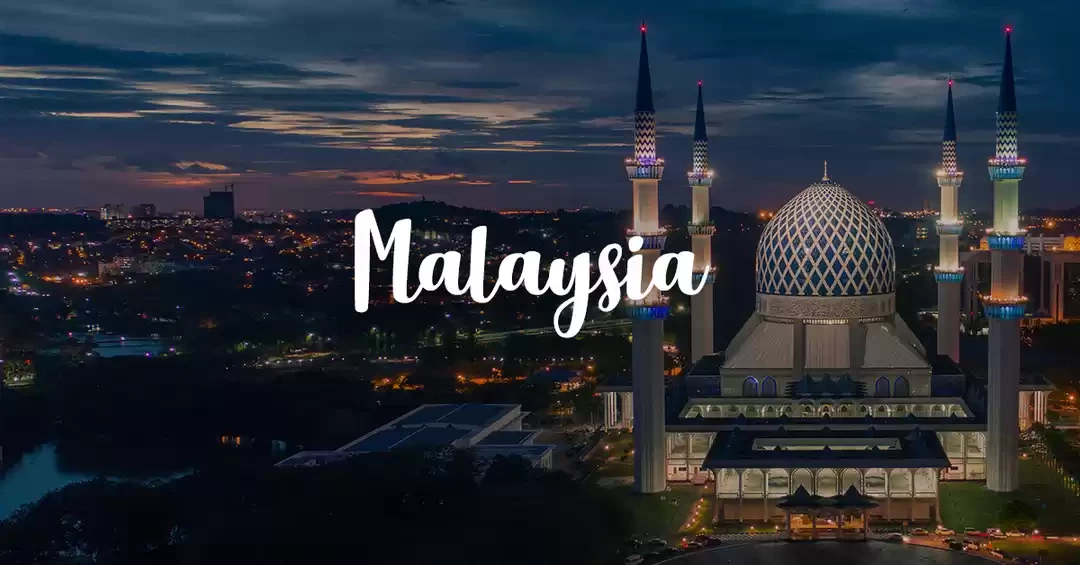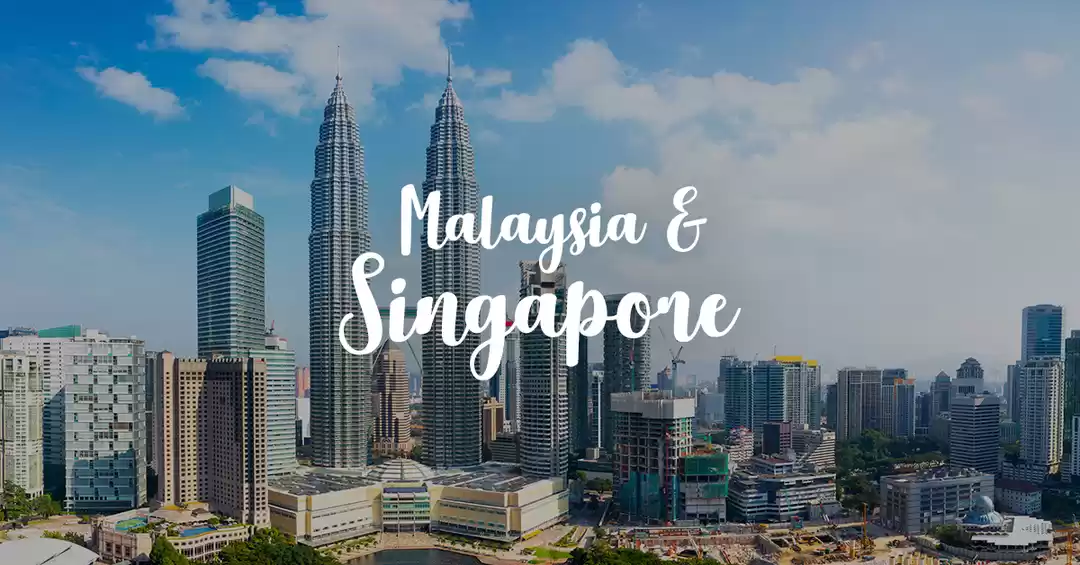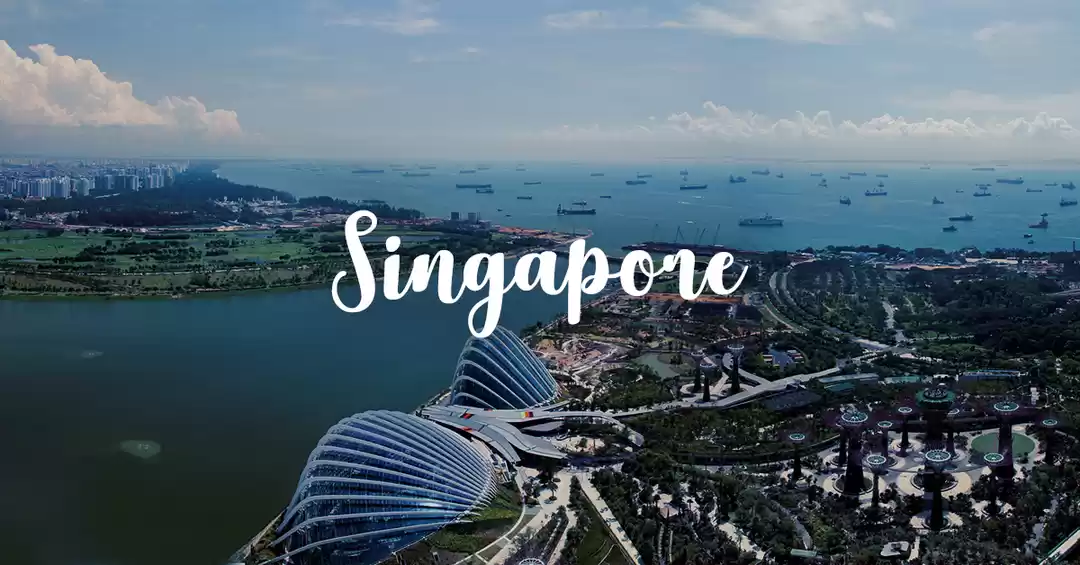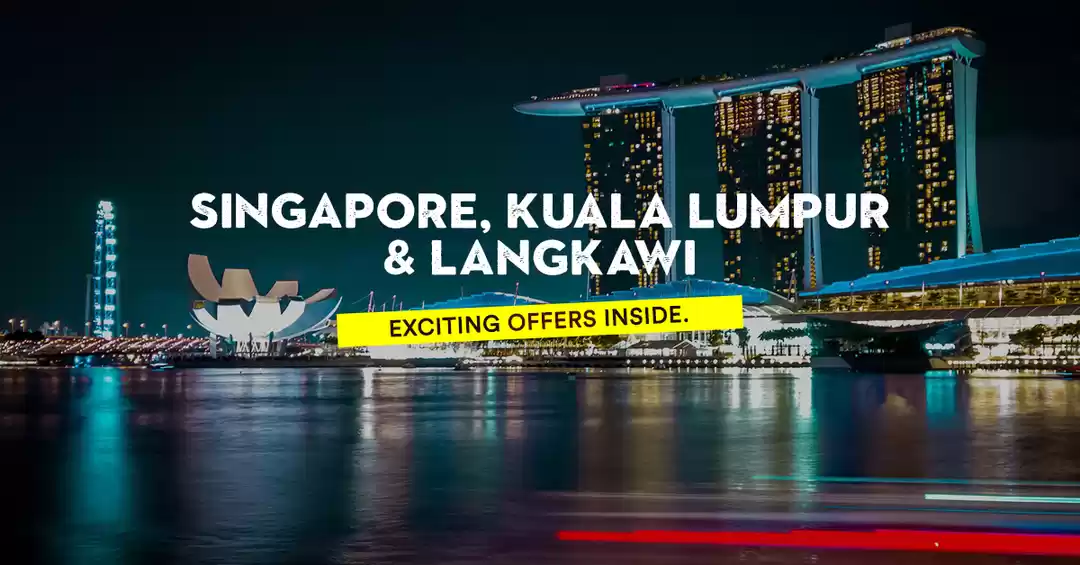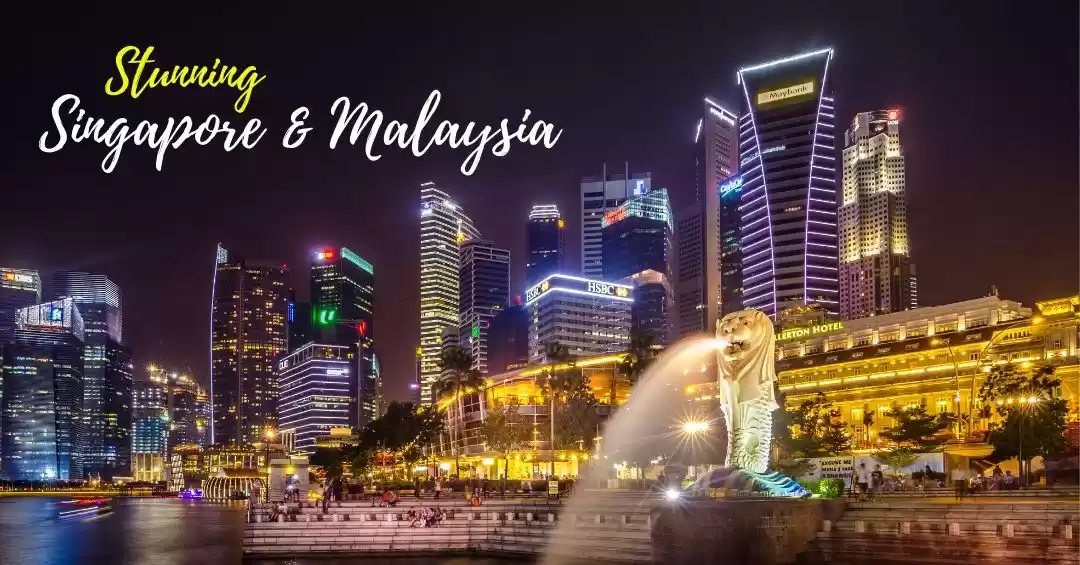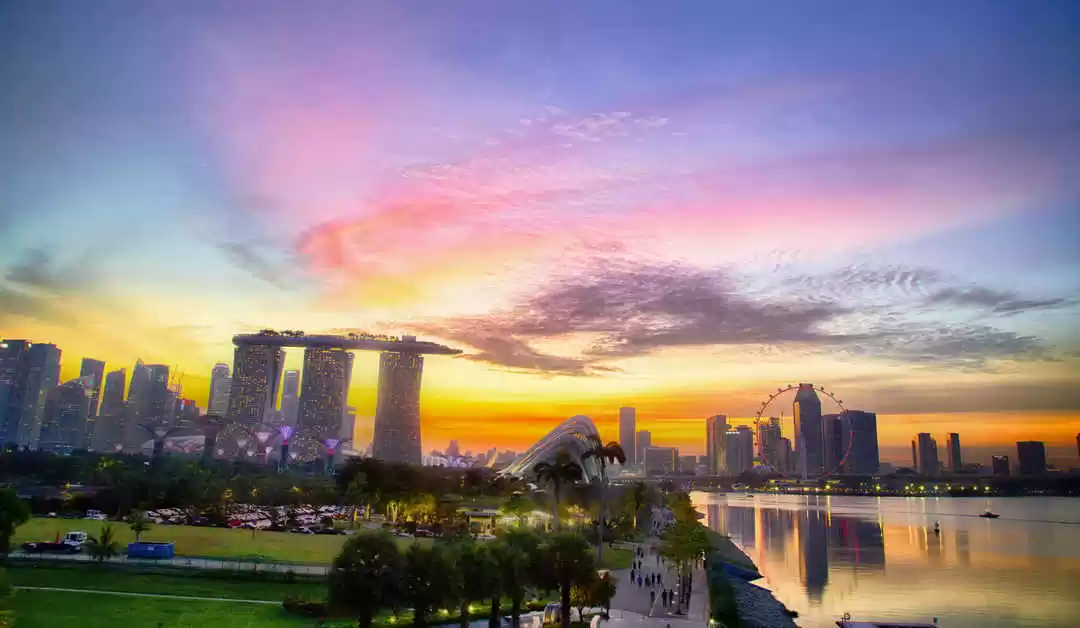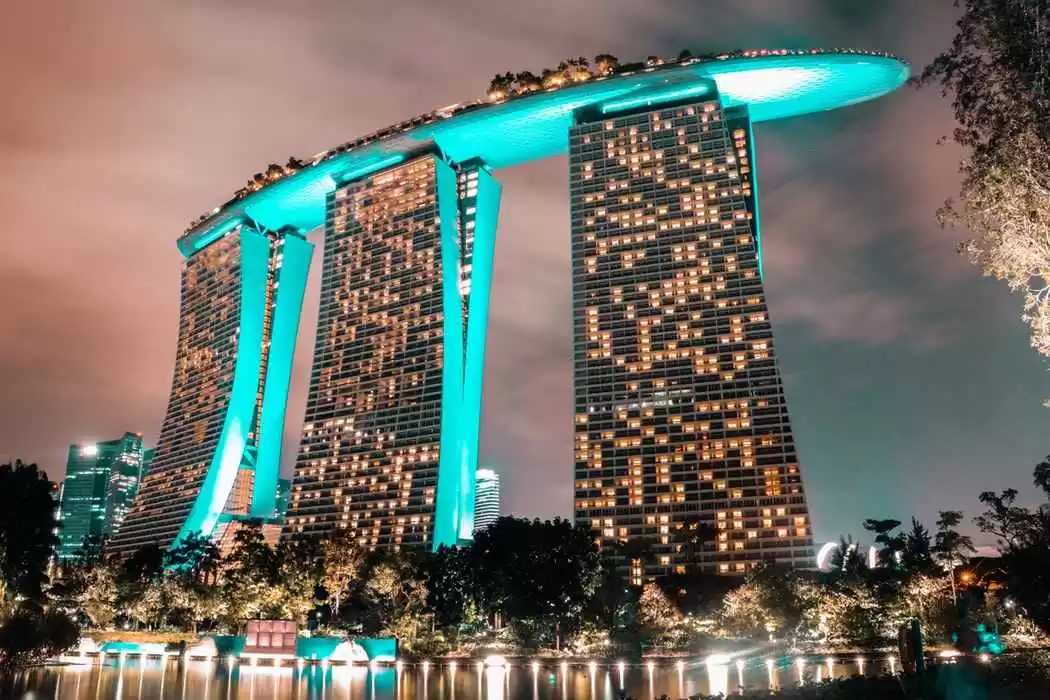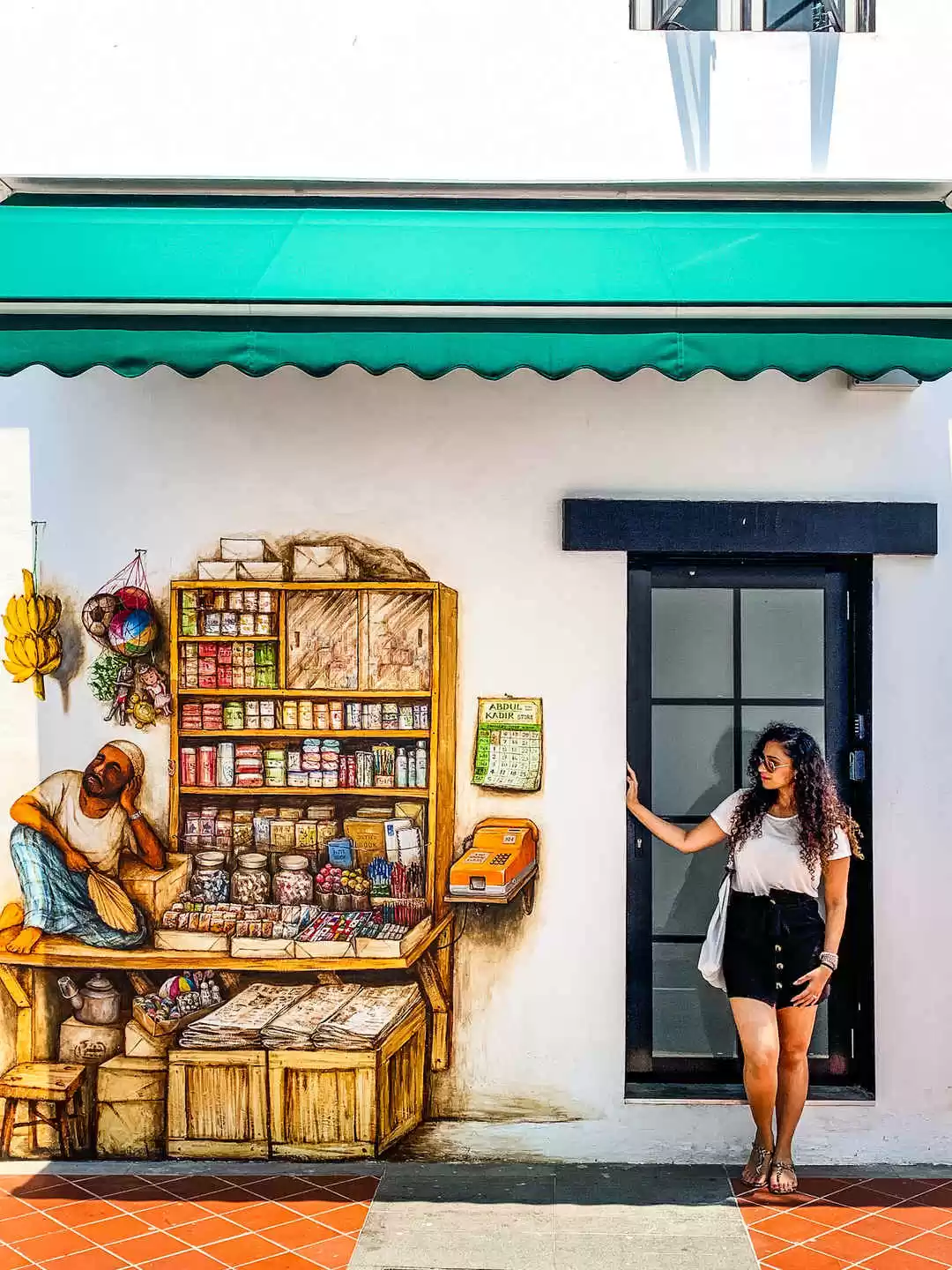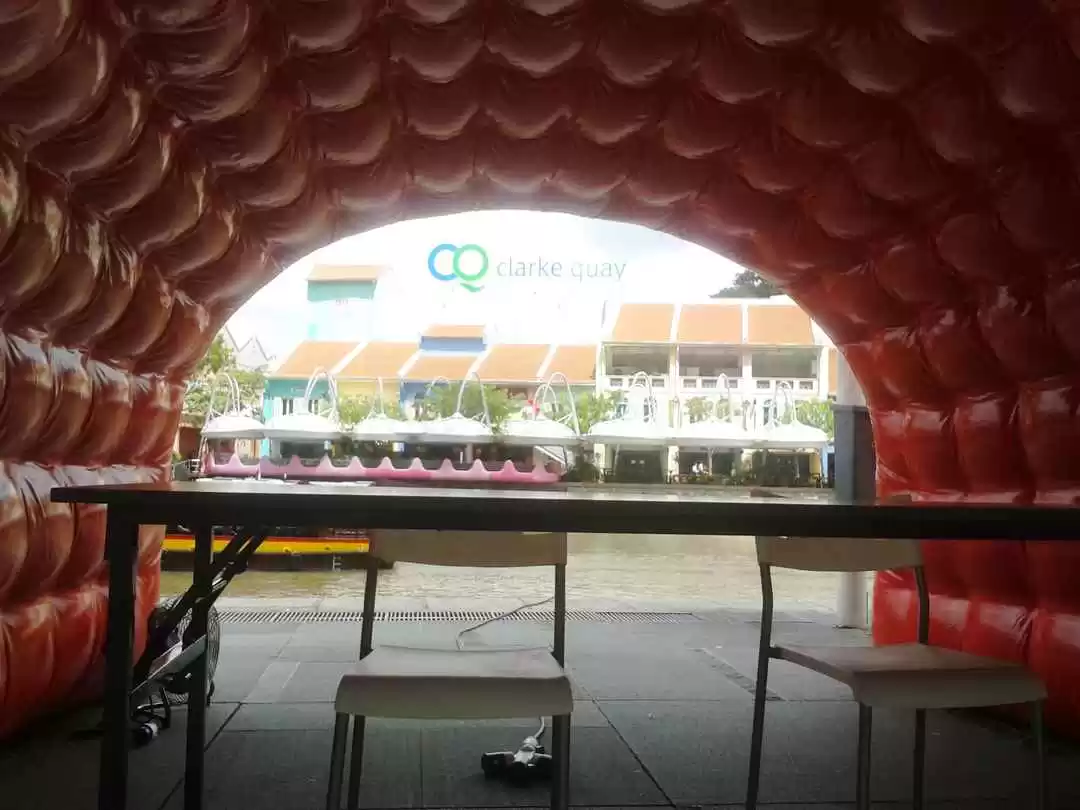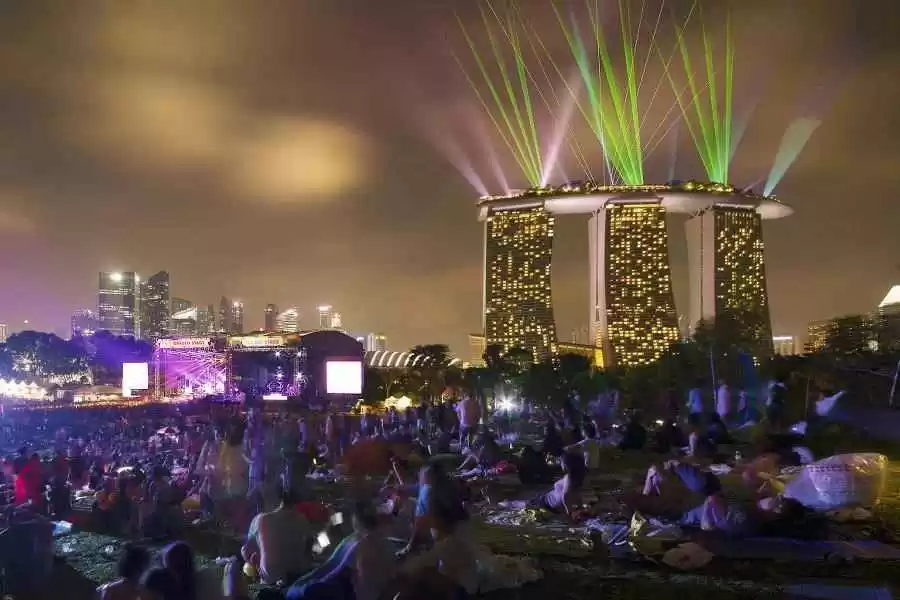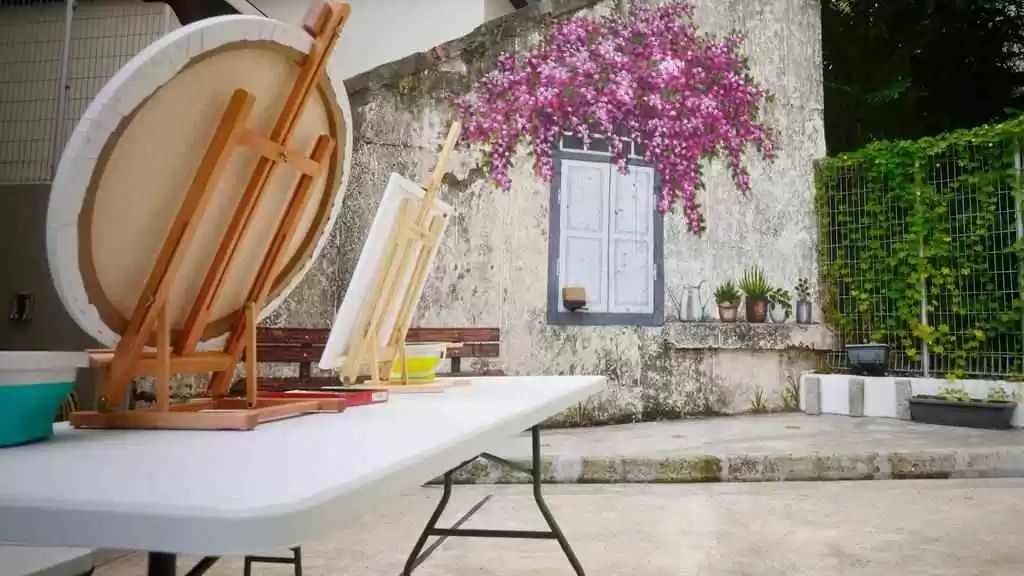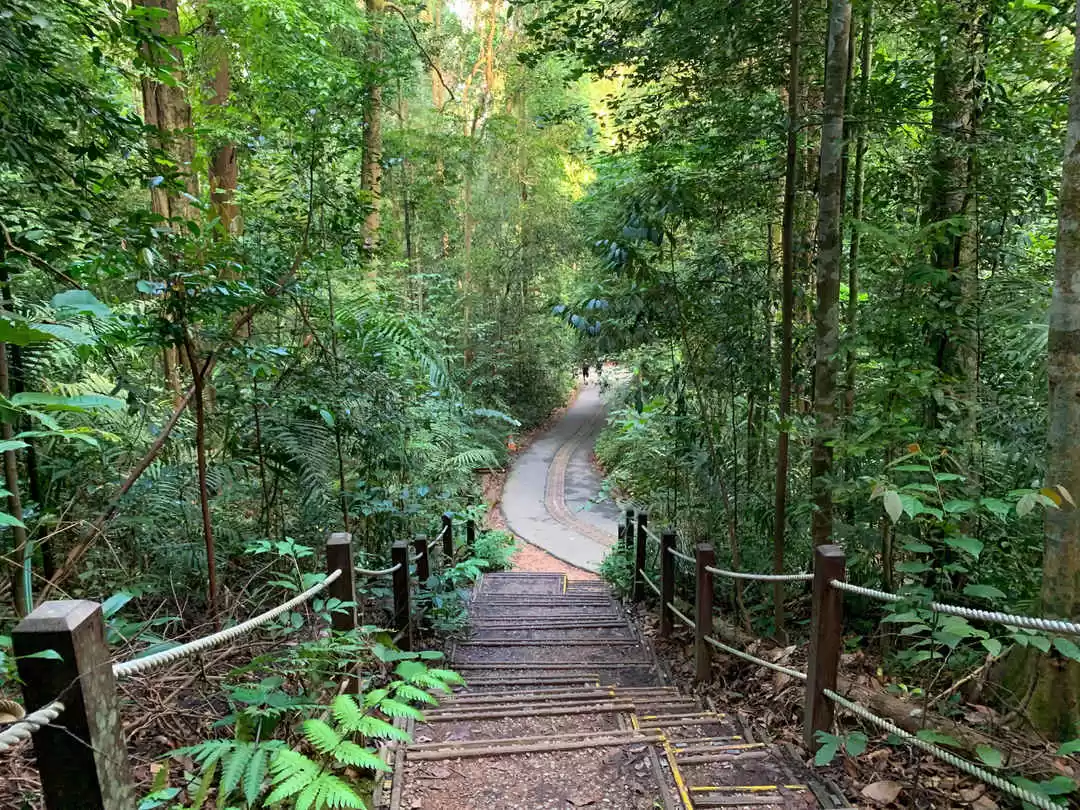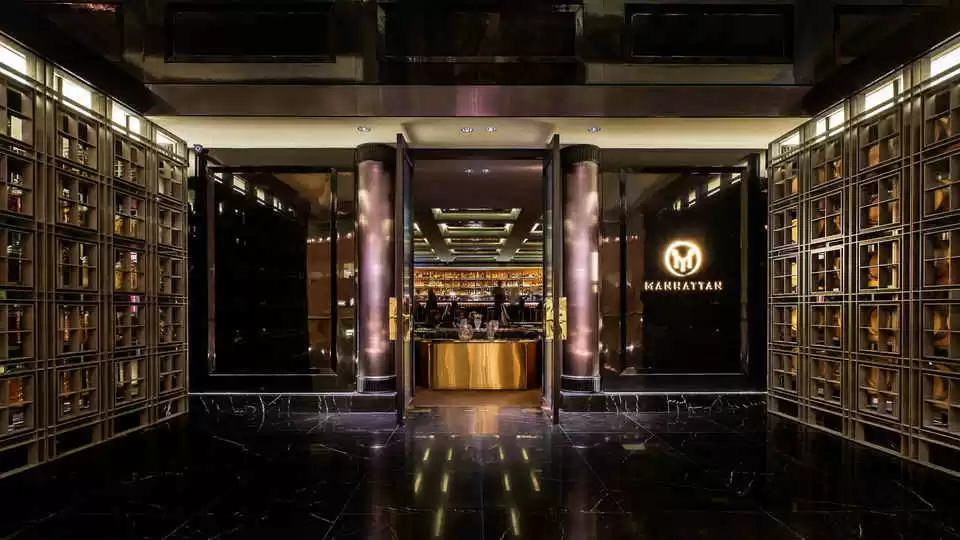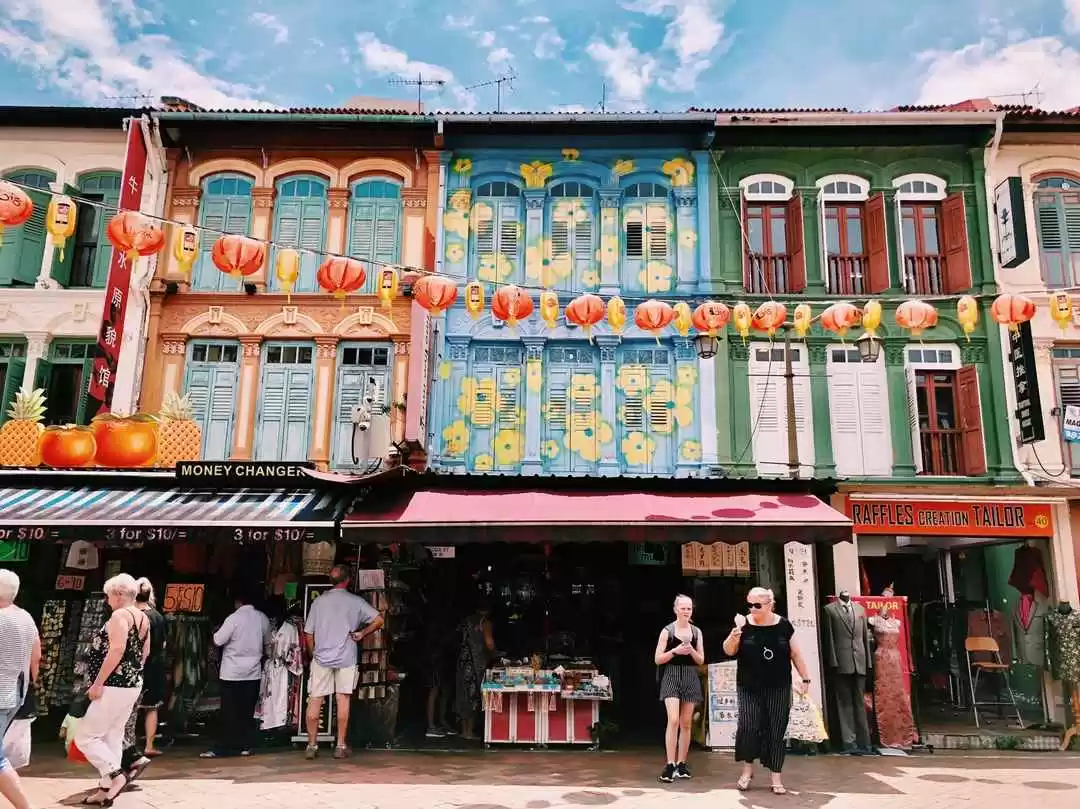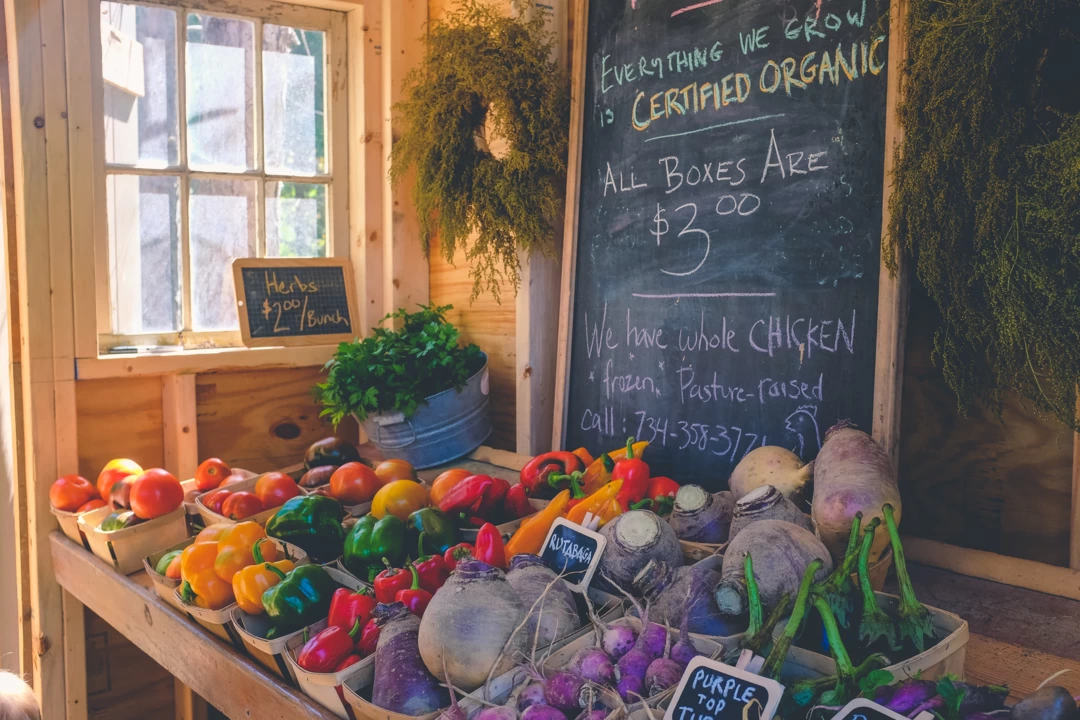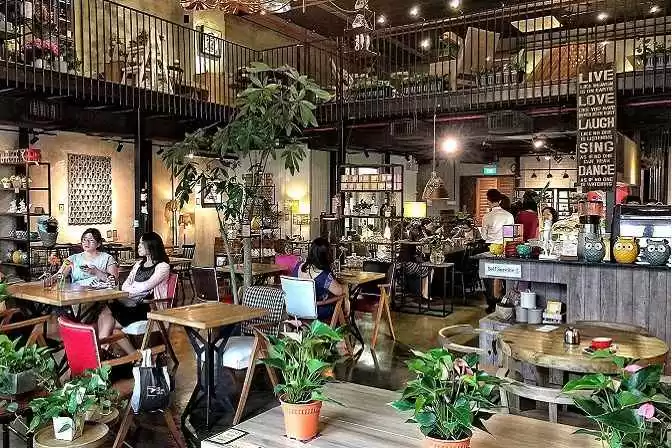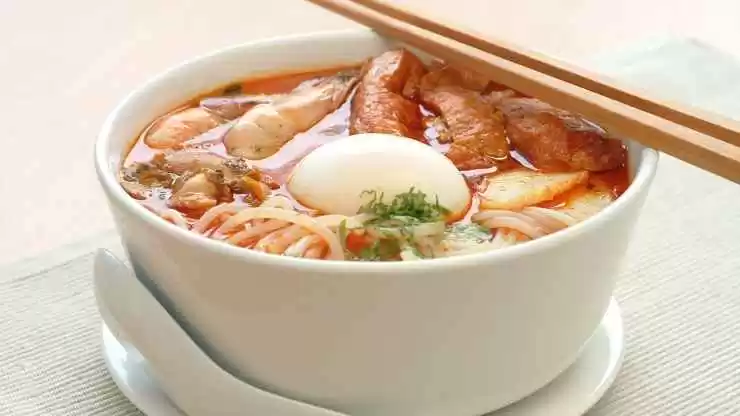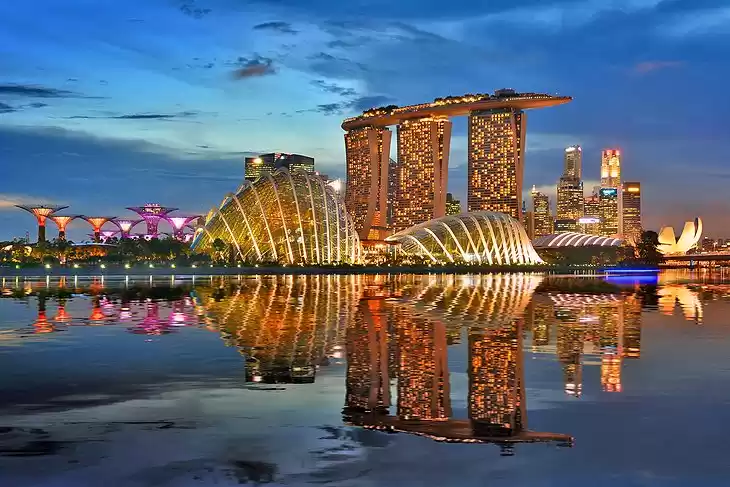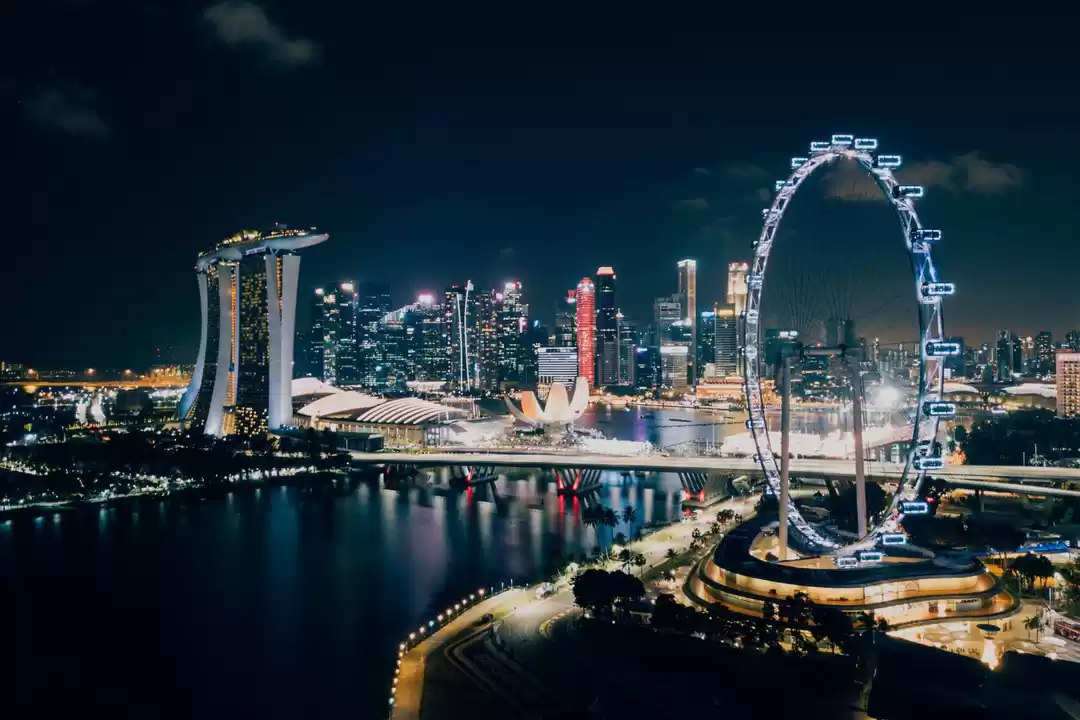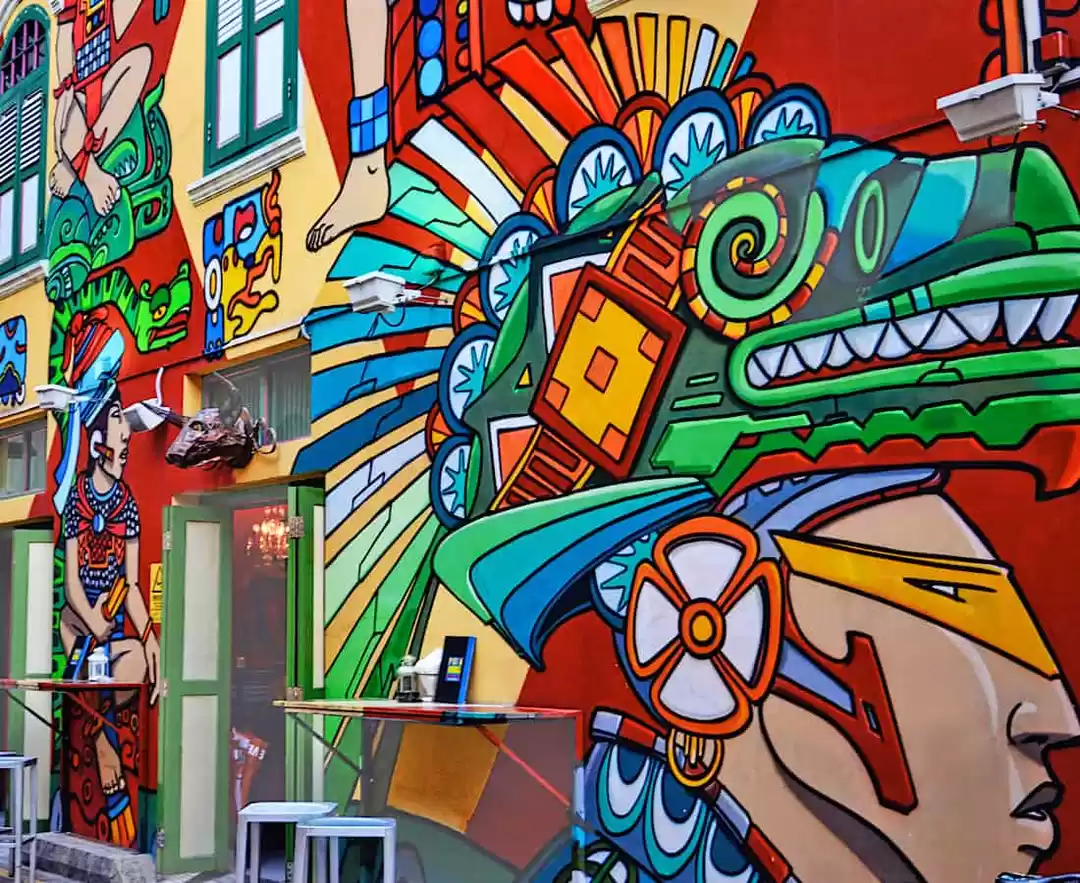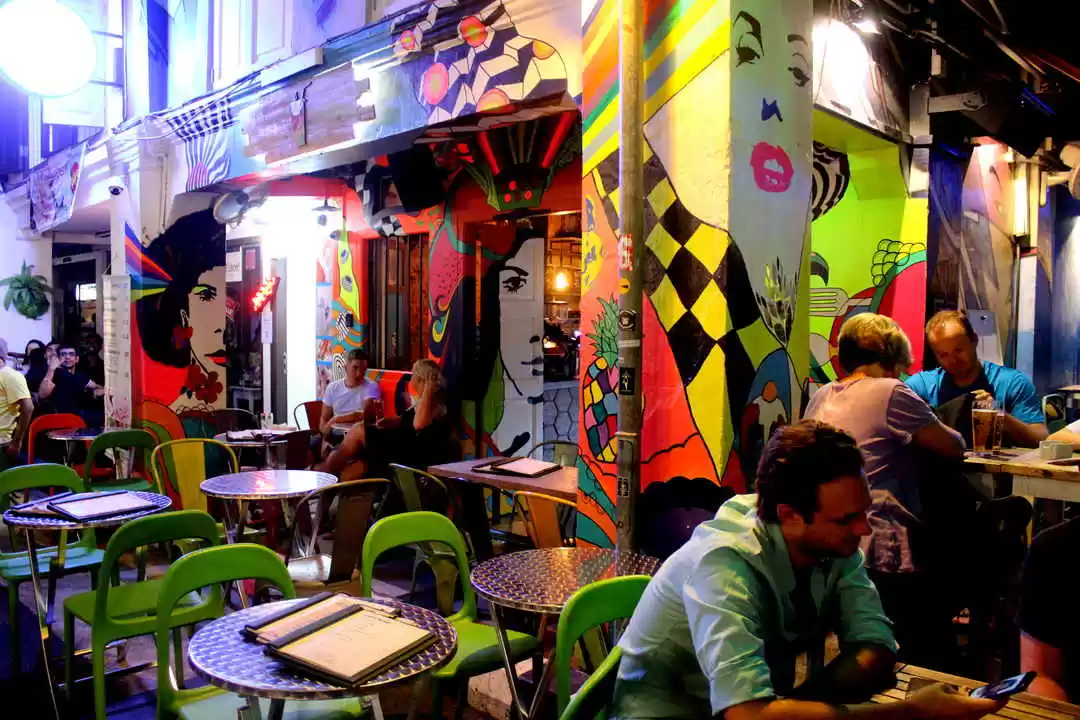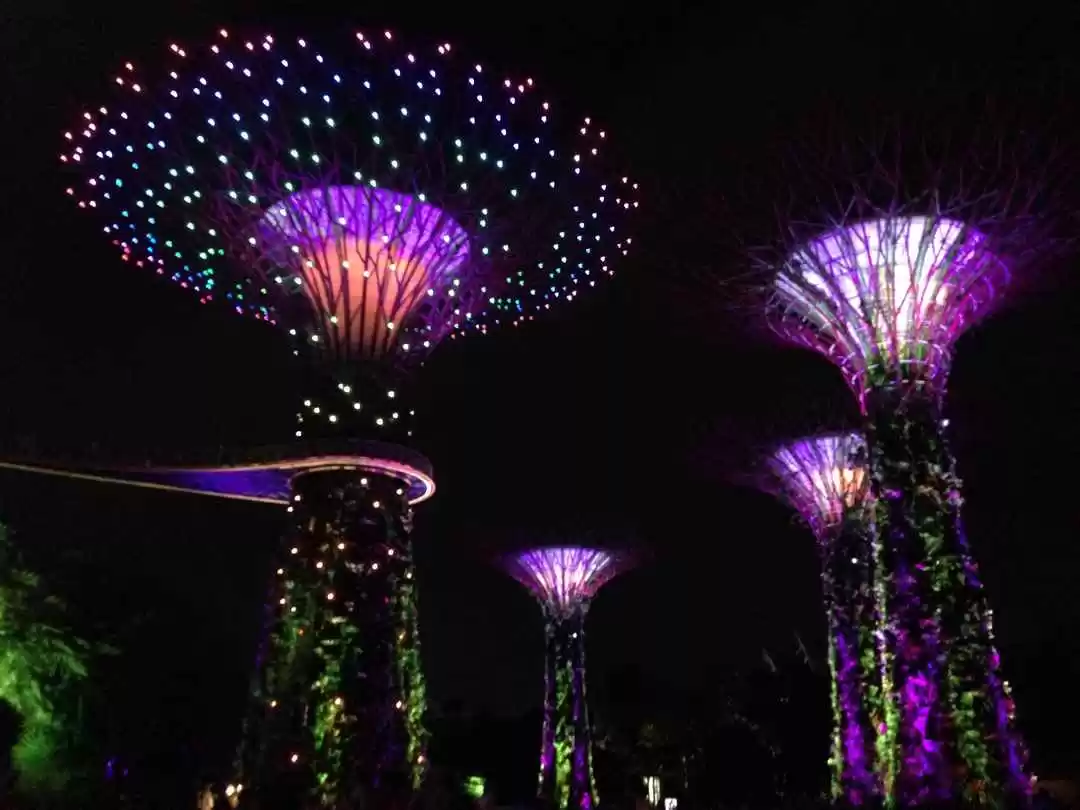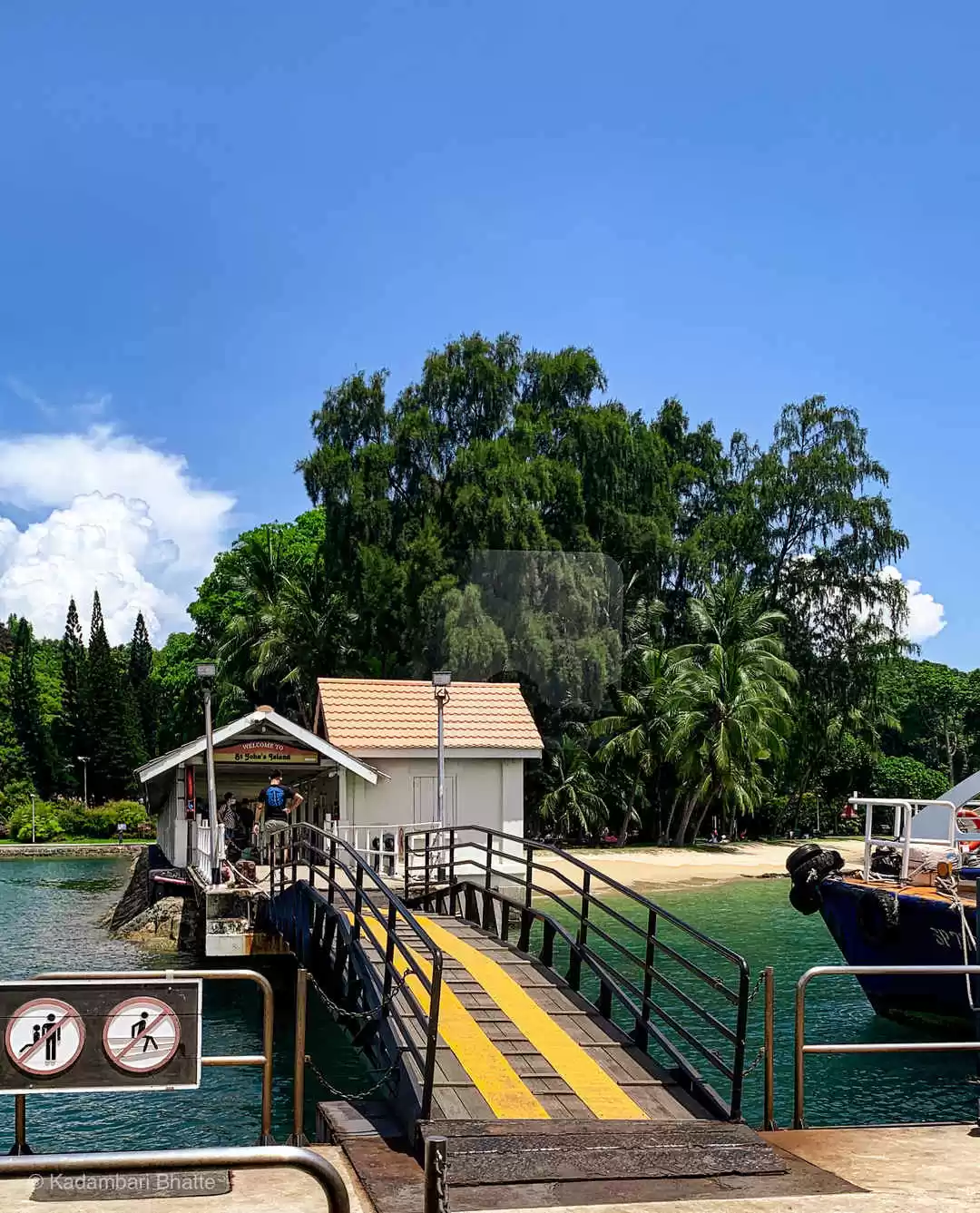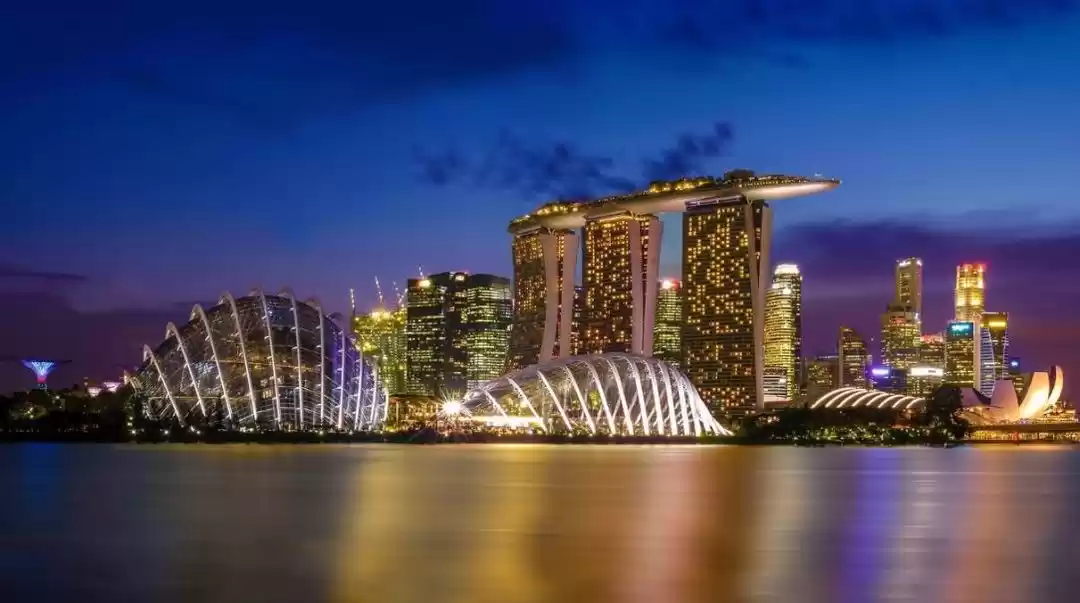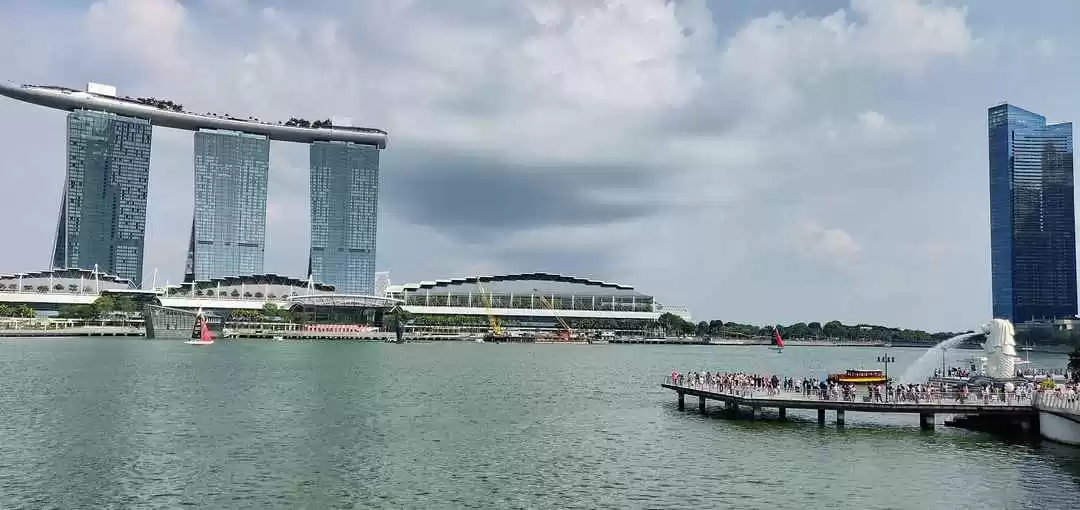Singapore Tourism and Travel Guide
All You Need To Know About Singapore
Watch These Amazing Videos Before Your Plan Your Trip to Singapore
When in Singapore, Don't Miss These Unique Travel Experiences
Take a Virtual Singapore Tour: The Country In Pictures & Videos
Post About Your Singapore Trip & Make it to Editor's Picks
Best Time to Visit Singapore
Though Singapore with all its charming attractions seems like a year-round destination, however, planning a Singapore trip with the perfect weather is tricky. Like its neighbours, Singapore's weather is unpredictable and can fluctuate from pleasantly sunny to torrential downpours. It’s crucial to plan out to the best time to visit Singapore, so that the rain doesn’t spoil your Singapore travel plans.
The best time to visit Singapore is from February to April, which is the rainy island-city’s dry season. There’s comparatively less rainfall during this period than at other times of the year. Singapore tourism sees a spike in the months of February to April as it is more comfortable to travel to the beautiful island around this time.
Here’s a breakdown of the different seasons in Singapore to pick the perfect time to travel to the Lion City:
Wet season
September – January
If you’re a lover of rain and its charm, then you can book your tickets for this period. However, expect a good soaking any minute during the wet season. Sometimes, it can rain all day long! With all the drenching, the weather is still hot and sultry, so you'll need to wear comfortable clothes. Throw your Singapore map into a waterproof backpack along with a sturdy umbrella and a breathable waterproof jacket to go forth and explore the various wonders of Singapore attractions.
Dry season
February – August
Though it’s dry season at this time, there are still spells of afternoon shower. The best weather for Singapore sightseeing is between February and April. During May and August, smoke from clearing fires in Sumatra enters the city and air quality and visibility drop drastically. Singapore weather is still hot and humid during these months, so pack light clothes and a rain jacket to avoid walking around with squelchy shoes.
Visa Information
With Singapore tourism witnessing an increased influx of Indian tourists, it is easier and faster to get a Singapore tourist visa for Indian passport holders. However, there are several points to consider:
– If you’re an Indian passport holder, then you can apply for a Singapore tourist visa that allows you to stay for a maximum period of 30 days with a validity of two years.
– Not unlike other countries, Singapore tourism needs you to ensure that your passport is valid for six months from the date of entry into Singapore.
– Singapore tourist visa is a multiple entry visa with which you can travel multiple times to the Lion City without reapplying, in the given visa validity.
If you have four to five hours to spare in between your connecting flights, Singapore tourism encourages you to register at Changi Airport for a free Singapore tour. In order to do this, your halt must be less than eight hours, otherwise you will need a transit visa. You’ll need to show proof to Singapore tourism of having sufficient funds during your stay there along with confirmed return flight tickets. You can see the list of documents required for the application process on the Singapore tourism website. Once done, you can start planning an enthralling trip to the garden-city!
Top Places to See in Singapore
With a host of exciting Singapore attractions, you’ll be spoilt for choice on where to go. We’ve got a list of places to visit in Singapore, ranging from astounding architecture to historical monuments, bustling markets to serene islands and glittering nightlife to the spirituality of monasteries there. Take your pick and get started!
Art Science Museum
Drop in at the Art Science Museum for an overwhelming blend of art and science. Curated exhibitions there allow visitors to explore interactive high technology digital installations which will transport you to a different cerebral universe. In addition to this, their revamped exhibition Future World – a Singapore tourism initiative – grabs a lot of eyeballs owing to their interactive exhibits. The museum transports people to different dimensions and is a great place to spend a few hours exploring.
Timings: 10am to 7pm
National Gallery Singapore
This one’s for the art and history enthusiasts. The National Gallery is an imposing structure with balustrades, restored painstakingly by Singapore tourism. Spanning two buildings, the former Supreme Court and the former City Hall, the architecture of the gallery is striking. The gallery houses modern art by artists across Southeast Asia. An array of up-and-coming artwork and renowned pieces by well-known artists from the region find a place here. There are exhibitions on food, photography, film and fashion you can lose yourself in. You can’t afford to miss out on the newly-opened galleries showcasing Chinese ink art and the magical rooftop sculpture garden.
Singapore Botanic Gardens
Bang in the middle of the busy city-state exists a small slice of green paradise opened in 1859, making it Singapore tourism’s oldest park. Home to 10,000 flourishing species of plants and one of the world’s best orchid research and breeding centres in the world, the quiet grounds is a sensory treat owing to the fragrance of blooming flowers. You’ll also find a lot of jungle creatures here including three-foot long monitor lizards that are harmless unless provoked. Then it turns into a precautionary tale worth telling.
Gardens by the Bay
Singapore tourism’s most prominent garden, Gardens by the Bay is famous for its sci-fi looking Supertree Grove with its 18 vertical gardens that reach a whopping height of 16 stories. You can check out its conservatory domes, OCBC Skywalk and Marina Barrage. Make sure you’re in time for their free light show under the shade of enormous trees. Pick a grassy spot to settle down and watch the play of lights and music.
Singapore Zoo
Here’s a chance to watch animals in their natural habitat. The animals are kept in open captivity, but their large enclosures are surrounded by moats and other barriers. Singapore Zoo is home to 300 animal species out of which 15% are in the threatened category. You can also enjoy Night Safari at Singapore Zoo.
River Safari
Take a gander at Singapore tourism’s tropical forests as you glide by on a boat. There are freshwater animals living on both sides of the river; you can spot friendly American beavers, sinewy anacondas and adorable giant pandas that’ll put a smile on your face.
Pulau Ubin
If you’re seeking solace and nature then Singapore tourism’s got that too. There are a number of spectacular islands for you to go island-hopping. For just 150 bucks, you can board a bumboat from the Changi Ferry Terminal which holds up to 12 people. Pulau Ubin is a short ride away. Reach the jetty and walk over to the small town there to rent a bike and cycle all over the island. Pulau Ubin has Singapore’s last surviving kampong or traditional village. The beautiful Chek Jawa Wetlands are a picturesque slice of nature among Singapore’s tourist places, with a boardwalk for you to sit on and watch the sun go down.
St John’s & Lazarus Island
Attention, all beach bums. If you’re lusting for the glittering sea and white sand, then Singapore tourism has got you covered. St. John’s and Lazarus Island boasts of a splendid crescent beach with blue, crystal-clear waters and fine white sand. You’ll have to plan your Singapore tour to get here. There are scheduled ferries plying from Marina South Pier; a ticket will cost you ₹900 plus and will deposit you on the pretty island in 30 minutes. There are no shops or eateries here so make sure you pack a nice meal along with snacks, water, sunscreen and hat. Once there you can swim in the cerulean blue water, dry off on the beach and dig into your stash of food as you watch the sun setting over the horizon.
Little India
You’ll realise that Singapore tourism’s claims of being a melting pot of cultures are not unfounded when you direct your footsteps towards Little India. The area is filled with sounds, a variety of colours and fragrances from the stalls there. Thread your way through the market here to pick up some knick-knacks or check out Mustafa’s store which is rumoured to have literally everything. If you’re craving for some Indian food, then you will find it here. Stop at the Sri Veeramakaliamman Temple to offer up a quick prayer and then head to Jalan Besar with its quirky cafes to grab a bite.
Chinatown
Immerse yourself in Singapore tourism’s culture by walking into Chinatown with its pretty red tasselled lanterns. The area is bustling with different sights and smells that will assail your senses. Pick up a few souvenirs on Pagoda Street before heading over to Chinatown’s food street to dig into the street-food offered at hawkers’ stalls. The Buddha Tooth Relic Temple is also located here and stands decked up in red and gold and is rumoured to have one of Buddha’s teeth inside.
Universal Studios Singapore
All adrenaline junkies should head to Universal Studios Singapore on Sentosa Island. There are seven themed zones with hair-raising rides and entertaining shows. If you’re more of a water baby, then go to Adventure Cove Waterpark to scream your lungs off on its water roller coasters. You can’t possibly miss out on their snorkelling pool where you can swim around with colourful freshwater fish. Their Halloween horror nights are a blast and people go all out to participate.
Siloso Beach
Singapore tourism has plenty of options where you can treat your eyes to natural beauty and Siloso Beach is proof of that. Located on the far end of Sentosa Island, Siloso is one of the three beaches there. Siloso Beach has restaurants by the beach for you sit back and unwind with food and drink with beach views. If it’s a party you’re looking for, you’ll find it on Tanjong Beach. For families, Palawan Beach is a good option where you’ll find kids playing in the water and several picnic spots.
Changi Airport
Yes, believe it or not Changi Airport has been transformed into a glittering attraction in itself by Singapore tourism. Spend time at Changi Airport when you land, which you invariably will once you set foot in the mammoth structure which looks like you’ve entered a mythical dimension. The recently-opened Jewel at Changi Airport is a destination in itself with its impressive indoor waterfall – the tallest in the world – a 130 feet rain vortex cascading down from a massive oculus amidst a forest of 1,400 trees. Yes, a forest inside the airport.Once you’ve picked your jaw off the floor, you can bounce around on the airport’s bouncing nets strung 80 feet high or lose yourself in its two giant mazes (one with mirrors, one with hedges). Channel your inner child by zipping down a giant slide or dine at its luxury bars and restaurants. You can also arrive a little early before your return flight if you want to have another go at their giant slide.
Marina Bay Sands Rooftop
Singapore’s Marina Bay Sands Rooftop hotel is literally the glittering jewel in its crown. Take a swim in the world’s largest infinity pool, sample some award-winning gourmet food or spend time at their various entertainment options. Make sure you check out the prices before you order a glass of wine because this place spells swanky. It is open till 2am for night owls looking for a memorable night.
Activities and Things to Do in Singapore
With all of Singapore tourism’s vast number of crowd-pleasers and beauty, there’s no way you’ll be bored. The activities here are unique and not found in a lot of places. Make your bucket list and make sure you tick all of them. With an array of things to do in Singapore, you won’t be able to sit still. Here are a few ideas to help you with that list.
Go on a night safari
Next to the Singapore Zoo is the Night Safari, the world’s first nocturnal zoo. An offbeat attraction of Singapore tourism, this wildlife park is only open at night which sets it apart from other Singapore tourist places. The experience is edgy; you’ll be walking on paths and bridges to delve into the jungle at night and witness 120 species of nocturnal creatures such as tigers, fishing cats and alligators to mention a few. There are electric trams running around the length of the park which you can board. The guided tour will help you navigate the park better. There are antelopes which move around freely and may nudge you for a snack. There’s a fruit bat enclosure which you can stroll through to find a fruit bat dangling inches away from you. If you’ve got a kid along, take them to the 20-minute Creatures of the Night show. Flash photography is banned here so make sure you don’t disturb the animals with bright flashing lights.
Lose yourself in the underwater world of S.E.A Aquarium
A feather in the cap of Singapore tourism, the world’s largest aquarium houses 49 marine habitats and over 100,000 sea creatures. Located on Sentosa Island, the aquarium is a terrific place to view the complex and diverse marine habitats around the world. The shark tunnel has hammerheads, silvertip and sandbar sharks swimming overhead so you can look up and marvel at these majestic creatures. Wave to colourful reef fish from the Caribbean Sea, watch dancing eels in the Bay of Bengal section, spy on lobsters and lionfish from the South China Sea scuttling along or peer down at fire shrimp and yellow boxfish from the Red Sea. You can also squeeze into a cave to look at moray eels. There’s information on the ecosystems of Laka Malawai, coastal mangroves and kelp forest. Another exhibit which will leave your mouth open with amazement is the Ocean Journey with lit jellyfish, scary-looking spider crabs and a massive deep sea octopus. If that doesn’t leave you impressed, the 36m long and 8.3m high will bring you close to stingrays, sharks, barracuda and other water fish. You can spend time feeding fish or delve into the second underwater tunnel swimming around a ship wreck.
Queue up for a plate of chicken rice and noodles at a Michelin-starred stall
Wake up early and queue up at 8am in the heart of Singapore’s Chinatown, in front of Chef Chan Hon Meng’s Michelin-starred hawker stall. Chef Chan dishes out delectable Michelin-starred soya sauce chicken rice and noodles to a serpentine queue which stretches down to the second floor of the hawkers’ market around lunchtime. It’s best to get here early to sample his tantalising fare as more and more people join the line for lunch and then you’ll have to stand for hours in line for a taste of this Michelin-starred food.
Spend a day at Universal Studios
Singapore tourism’s Hollywood movie-themed park deserves a visit. The park is divided into seven ‘worlds’ which you can explore according to your interests. If you’re all for the hair-raising rides then enter the Sci-Fi City to ride on Battlestar Galactica which is the world’s tallest duelling rollercoaster where you must choose between riding the CYLON or the seated HUMAN as they twist, spin and roll. Transformers the Ride in Sci-Fi City is a 3D ride into a dystopian future where Transformers fight it out. History buffs can choose Ancient Egypt which has the Revenge of the Mummy roller-coaster, a ride which happens in the dark with guest appearances from zombies. There’s a show named Waterworld show where there are stunts to marvel at and plenty of water spraying around if you dare to sit in front. There’s a lot to keep kids happy with Puss in Boots and dinosaurs and singing and dancing shows. Make sure you get here bright and early to beat the queue.
Feel your stomach drop on the Singapore Flyer
If you’ve looked at the many pictures of Singapore’s glittering skyline on the internet, you must have seena giant Ferris wheel. Yes, you can take a ride on this 165m-tall wheel which is now an iconic part of the Singapore skyline. This takes pride of place in Singapore tourism’s many activities. The Singapore flyer is the second largest observation wheel in the world after the High Roller in Las Vegas. Overlooking the water near Marina Bay, the wheel makes for a terrific ride at night when the city is lit up. Your stomach will plummet when you look down over the water below but the spectacular views of Marina Bay, the skyscrapers of CBD, the river, the historic buildings of the Colonial District and ships on the South China Sea will keep you hooked.
Explore the Geylang district
A curious amalgamation of seedy activities and spirituality, this is another example of Singapore tourism’s diverse cultural features. Geylang is a red light district by night which has shop houses with architecture dating back to the 20th century. The district is set apart from the gleaming metropolis of Singapore by its colourful narrow houses built in a row with sheltered corridors at the front and internal courtyards. The design of these houses is emblematic of Singapore’s mixed heritage with their Chinese porcelain-chip friezes, French windows, Malay timber fretwork and Portuguese shutters. Haunt the narrow lanes of Geylang to gaze at 1930s Art Deco shop houses and a bungalow on stilts built in the Malay kampong style. To cater to the spiritual needs of the growing immigrant population, temples, mosques and churches sprung up and they still stand making Geylang a spiritual hub even today.
Marvel at animals in the Singapore Zoo
The best thing about this 28-hectare property is its natural habitat-like enclosures which allow the wildlife enough space to roam around. Singapore tourism’s marvel, the zoo is located on a peninsula in the Upper Seletar Reservoir. There’s a waterfall falling off the lip of a cliff called the Great Rift Valley which houses Nubian ibexes, baboons and mongooses. Climb up to the forest canopy to look at two-toed sloths, lemurs and flying foxes.
There are animals from the frigid Tundra such as polar bears, wolverines and raccoons. Spot a myriad variety of monkeys at the Primate Kingdom which gives you an opportunity to get a closer look at orangutans during their feeding sessions. You can also spot the rare white tiger as well as lions, leopards, cheetahs, giraffes and zebras. You can also hop on to a tram looping around the park to get to enclosures. Singapore tourism’s efforts here are noteworthy since the vast zoo gives you a chance to interact with a variety of animals in conditions mimicked to suit their natural habitats.
Witness the natural splendour of Gardens by the Bay
Singapore tourism’s Gardens by the Bay are unique in that they’ve merged futuristic technology with natural beauty. One of Singapore’s most remarkable gardens, the entire area is built on 101 hectares of reclaimed land. Massive biodomes rise from the surrounding greenery with over 800 species of plants from different climate zones within.
The Desert Dome for example has giant cacti while a gurgling waterfall spills from a 35m mountain in the Cloud Forest Dome. There are several creative and quirky sculptures around the place to arrest your eye. However, the most notable feature and a highlight of Singapore tourism are the 18 huge Supertrees which are lit up at night. The breathtaking view is complimented by spectacular sound and light show every night. To get to the Supertrees you can take a stroll on the OCBC Skyway walk, 22m above the gardens.
Gorge on delicious food at the Hawker Centre
For Singaporeans, food is serious business and hawker centres (large food courts) bring together street food stalls to serve all the traditional delicacies of Singapore along with snacks and fast food. It is to Singapore tourism’s credit that these hawker centres exist to provide people with a vibrant and quintessential experience at reasonable rates in an expensive city like Singapore. These hawker centres tend to get crowded so make sure you save your seat at a table by placing an object there such as an umbrella, bag or some tissues.
Head to Lau Pa Sat in the business district which is open all 24 hours and serves a variety of dishes in an impressive 19th century cast-iron building. Satay street stalls outside Lau Pa Sat come alive in the evenings and sell smoky satay skewers (small pieces of grilled meat with spicy peanut chutney) on the grill while some sell cold beer to thirsty customers.
For a more local experience, head to Old Airport Road Food Centre which is open from 8am to 11pm. The specialty here is the char kway teow (stir-fried rice noodles), noodle soup, seafood dishes and more.
Chinatown Complex is Singapore tourism’s authentic street food area and gives you that vibe with its sweating hawkers and sizzling food aroma. You can sample some claypot rice, congee (savoury rice porridge) and other noodle dishes. Smith Street serves up tender roast duck with rice and noodles to droves of people looking for a good meal.
Cuisine & Best Places to Eat in Singapore
The love of food in Singaporean culture is great and rightly so considering it is called one of the food capitals in the world. It is one of the finest places in the world for food connoisseurs because of Singapore tourism’s diverse culinary offerings. From fine dining at swanky restaurants, to posh watering holes and numerous hawker stalls which showcase Singapore tourism’s melting-pot population. Here’s everything in this Singapore travel guide that you need to try in the Lion City and the best places to find it:
Hainan Chicken Rice
The much acclaimed Hainanese chicken rice is Singapore tourism’s bait to foodies all over the world and boy, do they come in from all corners to try this dish. Considered one of Singapore’s national dishes, the dish is made by cooking rice in chicken stock, garlic and ginger for flavour. Some chicken and the rice is served with a side of ginger and garlic dipping sauce which gives off that spicy, pungent aroma.
Where to find it:
The most famous Hainan chicken rice stall is Tian Tian at Maxwell Food Court. However, they sell out quick and you might need to find an alternative. There are a great many options such as Boon Tong Kee and Wee Na Kee. If you want the gourmet version, then drop in at Chatterbox at the Mandarin Orchard Hotel.
Chilli Crab
Another luscious signature dish Singapore tourism boasts of is the Singaporean chilli crab. You shouldn't leave Singapore without trying the Singaporean chilli crab. Large crabs, the size of small frisbees, are slathered in a thick sweet and savoury tomato-based sauce that'll leave you licking your fingers. The tomato-based sauce has an egg whisked into it to add thickness to the gravy and after the crab is devoured, you can use mantou (small fried buns) to mop up the leftover sauce on your plate. You’ll be wishing you wore your stretchy sweatpants for this one.
Where to find it:
You’ll find some of the best chilli crab at Long Beach Seafood, Roland, Jumbo Seafood and No Signboard Seafood. Long Beach Seafood is the original inventor of the black pepper crab while No Signboard Seafood has created the white pepper crab.
Laksa
The Singaporean katong laksa is a bowl of rice noodles and seafood in a curry-like broth of coconut milk, dried shrimp, and spices. The comforting bowl of noodles originated from the Peranakans (Straits-born Chinese) in the Katong neighbourhood.
Where to find it:
There are many stalls selling the popular laksa but 328 Katong Laksa is one of the best; and incidentally, beat Gordon Ramsay in a cooking showdown! Other stalls you can try are the Janggut Laksa and the Depot Road Zhen Shan Mei Claypot Laksa.
Bak Kut Teh
This dish is a pork rib soup in a herbal broth and is eaten for breakfast in Singapore. Interestingly, it also makes for a great hangover cure. There are two versions of bak kut teh; one is a clear peppery broth named Teochew style bak kut teh with a clear peppery broth while the Hokkien style has a darker and more aromatic broth made of soy sauce and herbs.
Where to find it:
You’ll find the Teochew variety at Joo Siah Bak Kut Teh or at Song Fa Bak Kut Teh. You can try the Hokkien style dish at Ng Ah Sio.
Es Potong
Here’s Singapore tourism’s ice cream with a twist for you. Es Potong translates to ‘cut ice’ which is flavoured and folded in a slice of white bread. It’s basically an ice cream sandwich and is the perfect antidote to Singapore’s heat. Flavours range from taro to red bean. You’ll find vendors selling it in tourist areas such as Bugis Street, Orchard Road and Clarke Quay for ₹70.
Hokkien Mee
Originating from the Hokkien (Fujian) province of China, hokkien mee is Singapore tourism’s famous street food dish. It is made with stir-fried egg and rice noodles with egg, prawn and pork. Many have started experimenting with the dish and adding new ingredients for novel flavours with a traditional base.
Where to find it:
Geylang Lor 29 is one of the oldest stalls and has come up with a version of the dish made over charcoal fire since the 1960s. Head to Come Daily Fried Hokkien Prawn Mee in Toa Payoh with their loyal fan base. The place serves up hokkien mee with a strong prawn flavour, pork belly and other additions.
How Much Would It Cost To Travel To Singapore?
Singapore Tourism Board is on a spree to make travelling seamless in this gorgeous country. You'll find budget hotels and hostels as well as top-notch luxurious properties. The MTR transport system ensures cheap travel and accessibility to all the places, but you can always take a cab to hop from one place to another. From street food to Michelin Star restaurants, Singapore has it all.
Here’s a brief breakdown of some basic costs you might come across, while in SGP:
A one-way flight to Singapore from Delhi: 15,000 INR to 18,000 INR.
If you’re looking for a budget hotel which is reasonable on the pocket, you’ll find many priced at around 2,500 INR to 3,500 INR per night.
For those looking for a luxurious retreat, five-star hotels will cost around 12,000 INR to 15,000 INR per night.
A meal for 2 at Chinatown will cost you around 3,000 INR while dinning at a restaurant would be approx 5,000 INR.


